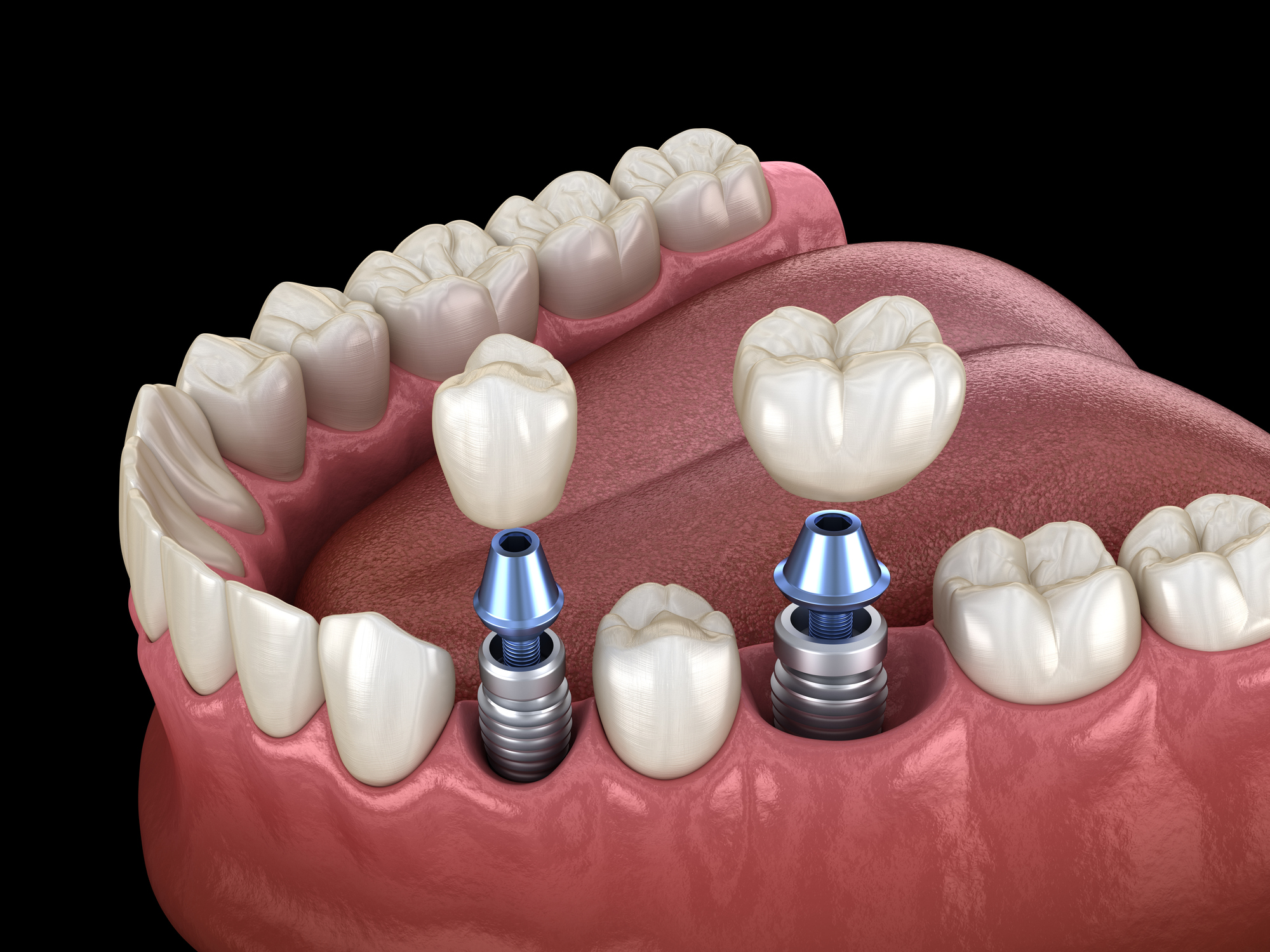Dental Sense - An Overview
Table of ContentsFascination About Dental SenseGetting The Dental Sense To WorkGetting The Dental Sense To WorkThe 3-Minute Rule for Dental Sense
are clinical gadgets operatively implanted into the jaw to bring back a person's capacity to eat or their appearance. They give support for artificial (fake) teeth, such as crowns, bridges, or dentures. When a tooth is lost as a result of injury or illness, a person can experience issues such as rapid bone loss, defective speech, or adjustments to chewing patterns that result in discomfort.Dental implant systems consist of an oral implant body and dental implant joint and might additionally include a joint fixation screw. Wisdom tooth cavity. The dental implant body is surgically placed in the jawbone instead of the tooth's origin. The oral implant abutment is usually connected to the dental implant body by the abutment fixation screw and extends with periodontals right into the mouth to sustain the attached man-made teeth
(https://linktr.ee/dentalsense1)Structure of The Oral Implant System choosing dental implants, talk with your dental copyright about the possible advantages and risks, and whether you are a candidate for the procedure. Points to take into consideration: Your general wellness is an essential aspect in determining whether you are a good candidate for oral implants, how much time it will require to recover, and the length of time the implant might remain in area.
Smoking cigarettes may affect the healing procedure and decrease the long-lasting success of the dental implant. The recovery process for the implant body might take several months or longer, throughout which time you typically have a momentary joint instead of the tooth. the oral implant treatment: Very carefully follow the oral health directions given to you by your dental provider.
All About Dental Sense
Implant failure can lead to the demand for an additional procedure to repair or replace the dental implant system. Recovers the capability to eat Brings back aesthetic look Aids keep the jawbone from diminishing because of bone loss Maintains the health and wellness of the bordering bone and periodontals Helps keep nearby (close-by) teeth stable Boosts lifestyle Damage to surrounding all-natural teeth throughout dental implant positioning Injury to the surrounding tissues throughout surgery, such as sinus opening Injury throughout surgical treatment (as an example, fracture of surrounding jawbone) Inadequate feature, such as really feeling like the teeth do not attack with each other usually A feeling that the tooth is loose or turning in location resulting from a joint screw loosening Implant body failing (looseness of the implant body) due to systemic infection, which may be most likely in patients with uncontrolled diabetes as a result of neighborhood infection in bone and gums sustaining the implant body due to delayed recovery, which might be most likely in individuals that smoke Problem cleaning the periodontals around the implant, resulting in bad oral hygiene Without treatment periodontal condition Post-surgical feeling numb as a result of nerve impingement or damage Always inform healthcare companies and imaging service technicians that you have oral implants prior to any magnetic vibration imaging (MRI) or x-ray treatments.
FDA is not knowledgeable about any damaging events reported for MRI or x-ray procedures with dental implants. Oral implants systems are usually made of products that adhere to global agreement standards of the International Organization for Standardization (ISO) or ASTM International. These standards have information of what makes a risk-free product.

A dental implant is a framework that replaces a missing out on tooth. With screw-like gadgets, the specialist inserts an implant into the jawbone, and it acts as an anchor for an artificial tooth, called a crown.
Dental Sense Can Be Fun For Everyone
Some people are not qualified for oral implant surgery. It is for dental surgeons to operate on people with: intense illnessuncontrollable metabolic diseasebone or soft cells condition or infectionIf these issues are settled, an individual can have the surgery. In, dental surgeons avoid running on individuals with: If people with any one of the above undergo oral implant surgical treatment, there is a higher risk of the implant falling short.

Oral dental implant surgical treatment is a tailored procedure. It's not the same for every person. The following provides a basic summary of what you can expect your dental practitioner, dental specialist, periodontist or prosthodontist to do: Place the implant operatively. Offer you time to heal. Connect the message and final crown, bridge or denture.
Next, your surgeon will very carefully put the dental implant into your jaw. Your cosmetic surgeon will rearrange your gum tissues and shut the incision with stitches. If your dental implant is near the front of your mouth, your dental professional will make a temporary tooth for you to use till you heal. That means, you won't have a space in your smile while you recuperate.
Dental Sense Fundamentals Explained
Your copyright can inform you what to anticipate in your situation. During the recovery phase, your jawbone should fuse to the dental implant. This procedure, called osseointegration, is critical for security and lasting success. This procedure can take anywhere from three to nine months. In many cases, it may take longer.
Once your implant heals, your dental practitioner can affix the joint (small connector article) pop over here and your last repair (crown, bridge or denture). This typically takes regarding one hour to complete and might need a second minor surgery. You should not feel any discomfort during your dental implant procedure due to the fact that your company will certainly use medication to numb your gum tissues.